

LOOK BOOK
Welcome to the 2024 cornell University Press look Book.
This retrospective of the books published in 2024 gives you a glimpse of each book. It also provides QR codes so that you can jump online to any book that captures your eye.
We’ve included a few articles by staff and authors that we published on our website over the year, as well, just to give you something a little deeper to dive into should you be in the mood.
Enjoy!



Timely, invigoratingly original. —Public Seminar “ ”
Meticulous. —Wall Street Journal “ ”
Gracefully written. —Jelani Cobb, Dean of Columbia Journalism School “ ”
EXAMINING THE LIFE AND DEATH OF ROCKEFELLER
REPUBLICANISM

hoW German Prisoners of War Were Used in the PostWar reconstrUction of the soviet Union
“A treasure trove of information.”
—Alexis Peri, author of The War Within
“It is a fascinating read.”
—Judith Pallot, coauthor of Waiting at the Prison Gate
the evolUtion of central Banks in the face of climate, financial, and health crises
“Convincing and compelling.” Economic Record
“A much-need and unparalleled account.”
—Kathleen McNamara, Georgetown University




hoW reliGioUs missionaries Portrayed Us citizenshiP aBroad and inflUenced Us Policy
“Outstanding. The book deserves a wide readership” Journal of Contemporary Religion
“Readable. Thought-provoking.” Religion

an intimate look at the life and time of noBel Prize-WinninG rUssian Writer ivan BUnin
“This is a fascinating text.” —Douglas Smith, author of The Russian Job
“A wonderfully readable translation.” —Yuri Corrigan, editor of Chekhov in Context


“
A unique, original view of 1970s-era New York City.
—Brian
Purnell,
author of Fighting Jim Crow in the County of Kings
”

WILL FIT PERFECTLY ON YOUR KNICKS SHELF.
Poasting and Toasting



Even before writing my book, Kings of the Garden, I understood that sports and music were inextricably linked. I know, not a huge revelation. Attend almost any sporting event in the US and you’ll be bombarded with music at every opportunity. Sometimes it serves to fill the silence while other times it encourages participation. After all, who doesn’t love dancing the “Y.M.C.A.” or clapping along to the “Cha-Cha Slide”? And sometimes music is used at particularly significant moments in the game to heighten the drama—“O Fortuna” is a popular choice. Often, songs are associated with teams. For example, the Yankees’ backers singing “New York, New York,” or Red Sox fans belting out “Sweet Caroline”—or players, like Mariano Rivera strolling to the mound as “Enter Sandman” blasts over the PA.
Beyond specific teams or players, professional sports leagues have historically been connected to genres of music: NASCAR to country music, hockey and football to hard rock, and baseball to classic rock.
But the strongest connection between a musical genre and a sport is probably the one that links basketball and hip-hop. There are many reasons for this, of course. But what fascinates me was how that connection emerged organically and was present almost from the very birth of hip-hop. The earliest emcees scratched records and created lyrical rhymes on the asphalt courts shared with basketball players, illegally plugging sound systems into electric poles intended to light the courts. When the weather turned too cold to perform outdoors, hip-hop relocated to high school gymnasiums otherwise used for basketball. More importantly, basketball players and hip-hop pioneers themselves embraced this new musical and cultural genre. Players tuned giant boomboxes to local radio stations to provide a musical score to their on-court exploits and rappers appropriated the language of the courts to create the lexicon of hip-hop, especially once songs like “Rapper’s Delight,” ushered in an era where radio airtime became a reality for rappers and hip-hop artists.

Beyond the informal connections between hip-hop and hoops, rap music emerged from the South Bronx just as the racial makeup of the National Basketball Association was shifting. During the 1970s, the NBA added eight teams and transformed from a league in which about half the players identified as African-American to one in which three out of every four did so. By the time Kurtis Blow released “The Breaks,” in 1980, the New York Knicks had become the first all-Black NBA team in an increasingly Black league. Owners wrung their hands at the potential of waning fan interest and, more importantly, revenue as the players on the court looked less and less like those fans paying to sit in the stands.
I have spent hours learning about the birth of rap and hip-hop, and encourage you to tune up some old school Grandmaster Flash, Run-DMC, and Kurtis Blow when you read Kings of the Garden. I promise, the connection between sports and music will absolutely be reinforced.
—Adam Criblez

hoW to center hUman-natUre relationshiPs and WellBeinG in edUcation
“Highly recommended for reform-minded educators” Choice
“My heart sang when I read this book.”
—Darcia Narvaez, coauthor of Restoring the Kinship Worldview

the evolUtion of central Banks in the face of climate, financial, and health crises
“Convincing and compelling.” Economic Record
“A much-need and unparalleled account.”
—Kathleen McNamara, Georgetown University





Exploring a community of women that transformed and helped to revitalize Russian Orthodox monasticism

A study of how humans imagine non-human beings

The impact of theater on "Chineseness" in China, Taiwan, Hong Kong, and Singapore

ACCESSIBILITY AND INCLUSIVITY IN EDITORIAL, DESIGN, AND PRODUCTION (EDP) AT CORNELL UNIVERSITY PRESS
The Cornell University Press Editorial, Design, and Production department takes as a reference point Cornell’s founding principle “any person, any study” when we
practice “any book, any person.” We endeavor to ensure CUP content can be accessed by traditional print methods as well as electronically and with full accessibility by persons with print disabilities and that our content is edited at high inclusivity standards.
Cornell University Press has been offering users of its books both print and electronic formats since 2010, and since then has digitized thousands of pre-2010 backlist titles to expand the reach of our sizable scholarly
catalog. The EDP staff were early adopters of the EPUB3 format, the current recommended format for ebook accessibility for persons who use assistive devices, such as the Thorium ereader, which our production editors use to evaluate all ebooks before we approve them for publication. We publish both reflowable (EPUB) and PDF formats to suit market demands. In 2021 we were one of the first university presses to institute required alternative text or extended descriptions for all illustrations in our books, well before the 2025 deadline for such features that many of our peer presses are now striving to meet as the EU prepares to enforce its upcoming European Accessibility Act. We continue to push beyond baseline compliance, adapting and adding accessibility features, such as making sure our tables are machine readable and the main text language is identified, for both our EPUB and PDF ebook formats, as accessibility standards evolve upward. All our ebooks are built to comply with the technical specifications of the Web Content Accessibility Guidelines (WCAG).
In addition, at CUP, we take the meaning of accessibility beyond its publication format, applying it toward removing barriers and exclusion from the content itself. In 2023, our EDP staff introduced our Inclusive Editorial Style Guide. The guide helps our authors analyze their sensitivity toward people of all abilities, ages, ethnicities, cultures, races, genders, and sexual orienta-
tions and is a crucial reference for our copyeditors and in-house editorial and design staff.
Moving ahead we look for opportunities to reach back and add accessibility enhancements to older ebooks whose research and scholarship remain highly impactful and stay in strong demand. Our wish in EDP is to match the scope and impact of CUP’s backlist with its widest accessibility potential.


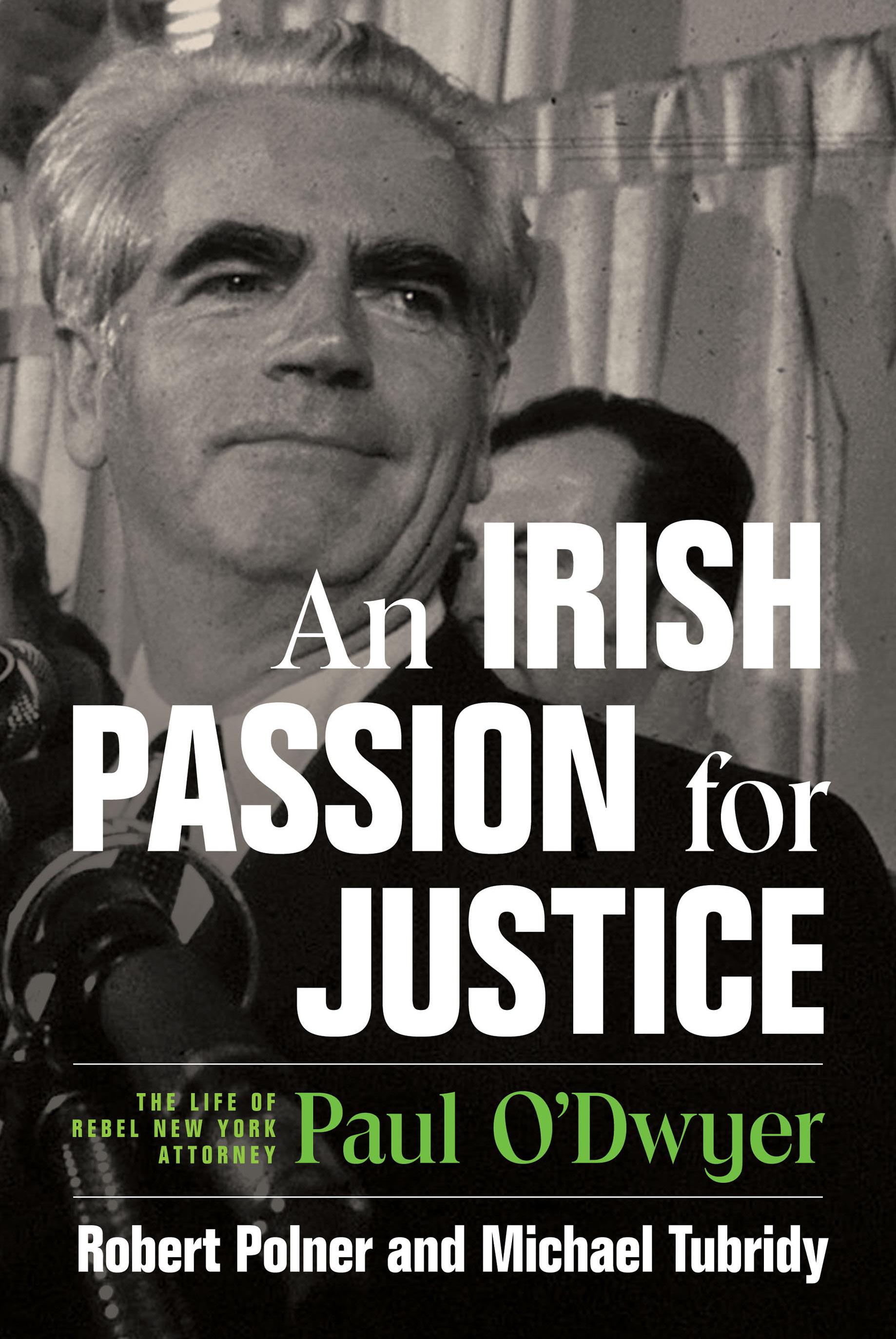
A terrific new book.
—WBAI’s “Deadline NYC” “ ” It’s a must-read!
—WBAI’s “Radio Free Eireann” “ ”
A major biography. —Irish Echo “ ”
A DYNAMIC, INDEFATIGABLE IRISH-AMERICAN WHO WAS ALMOST ALWAYS ON THE RIGHT SIDE OF HISTORY



How fire artists reimagine their labor and lives

A comparative-historical study of mass atrocities targeting religious minorities

Muslim rulership in medieval Christianized Iberia


hoW to recaPtUre the sPirit of social jUstice Work in hiGher edUcation
“An accessible, engaging explanation.”
—Paulette Granberry Russell, President of the National Assocation of Diversity
“Leads the way to dismantle white supremacy in education”
—Matthew Johnson, author of Undermining Racial Justice
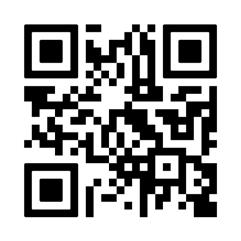
an in-dePth look into john stUart mill’s inflUence on hoW oUr hiGhest coUrt interPrets the first amendment
“A valuable contribution to the literature.” Choice
“An excellent, thought-provoking analysis.”
—Jeff Kosseff, author of The United States of Anonymous




An absorbing novel. —Booklist


Put Tim Wendel’s Rebel Falls on the shelf next to The Falls by Joyce Carol Oates and The Day the Falls Stood Still by Cathy Marie Buchanan. —Buffalo News
Once again, Tim Wendel finds a riveting story to tell. —Ken Burns, Filmmaker
WHAT IF REBEL SPIES CAPTURED THE LAST UNION WARSHIP ON THE GREAT LAKES BEFORE LINCOLN’S REELECTION?
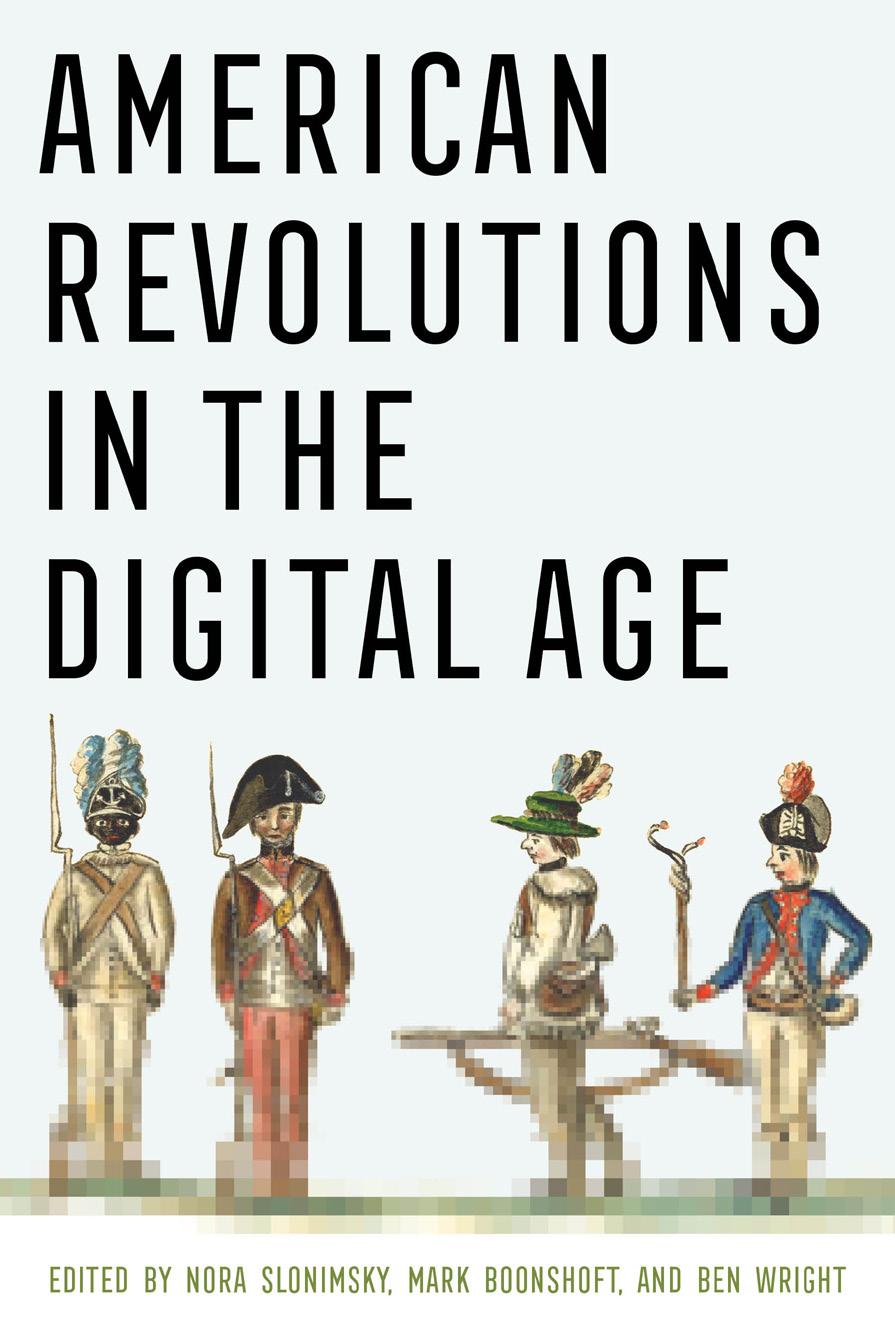
hoW the diGital hUmanities helP Us Understand history and make sense of the Present
“Reveals how a new generation of historians are using digital tools.”
—Michael Hattem, author of Past and Prologue
a cUrricUlar GUide strUctUred for early edUcation oUtdoors
“A must-read.”
—Richard Lou, author
of Our Wild Calling
“A treasure-trove of conscientious wonderfulness”
—David Sobel, author
of Childhood and Nature





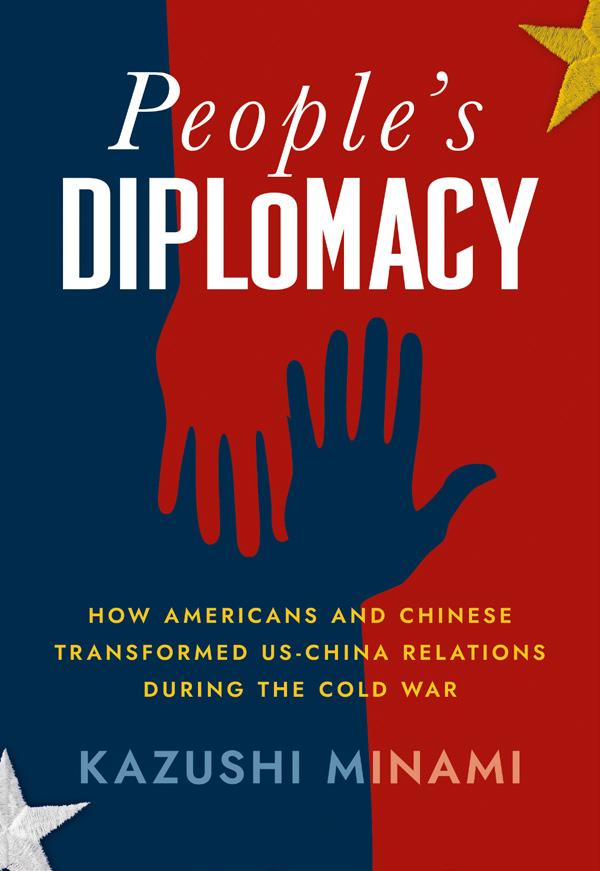
The new contexts in which people are living on, with, and from their land

Recovering a neglected period of Soviet cinema history

Exploring how American and Chinese citizens were crucial in shaping new ideas about international engagement


hoW racialized yoUth in UrBanized sPace reckon With time
“Poignant, poetic, and powerfully theorized.”
—Ruha Benjamini, author of Viral Justice
“A creative and compelling sociology of time.”
—Michael Rodriguez-Muñiz, author of Figures of Future

an artistic GUide to UnderstandinG the Bronze door of hildesheim and the scriPtUre it dePicts
“Brilliantly conceived and sensitively translated.”
—Adam S. Cohen, coauthor of Art and Architecture of the Middle Ages
“An art historian’s delight.”
—Jacqueline E. Jung, author of Eloquent Bodies



imaGininG a World Beyond the PackaGed teachinG and Uniformity of school
“An essential read for anyone interested in the state of education, teaching, and learning.” Choice
“This book is urgently needed.”
—David Lancy, Utah State University

exPlorinG the history of american evanGelicalism in Pre-revolUtionary iran
“An exciting and thoroughly enjoyable read.”
—Lauren Turek, Trinity University
“Immerses readers in the social and environmental dynamics of the so-called American moment in Iran.”
— Perin Gürel, University of Notre Dame


HERDING CATS FOR LOST FROGS AND HOT SNAKES
Lost Frogs and Hot Snakes: Herpetologists’ Tales from the Field reveals the thrills and travails that herpetologists experience when working with amphibians and reptiles in the wild. With essays from fifty field biologists, this volume, edited by Martha L. Crump, presents a multifaceted yet intimate look at life in pursuit of knowledge about the natural world.
More than one person warned me that editing 48 essays for Lost Frogs and Hot Snakes would be like “herding cats.” For anyone unfamiliar with this idiom: Think about how hard it is to get one inherently uncontrollable cat to do what you want. Now imagine organizing dozens of cats to perform that activity.
For years—decades, really—I’ve shared my stories of fieldwork in Latin America and listened to colleagues’ tales of field adventures. We share our experiences in pubs and around the campfire, but what if we shared them with a wider audience? Would the general public (and laboratory scientists) better understand and appreciate the value of field biology?
With that hope in mind, I invited 50 field herpetologists to share experiences, aiming for diversity in age, gender, ethnicity, focal animal(s) and type of research, geographic location of fieldwork, and career (e.g., academic, museum, zoo, and state and federal agencies). I easily could have invited twice as many outstanding contributors, but a niggle in the recesses of my mind whispered, “remember, you’ll be herding cats.” My invitation was open-ended: write 2,000 words about a meaningful experience—a disastrous field trip, an inspirational/spiritual experience, amazing encounter in the field, the joy of camaraderie in the field, the thrill of discovery, whatever you wish to share. Almost everyone I invited enthusiastically accepted my invitation; only a few declined, mostly citing previous commitments. I was thrilled!
But I worried: How would I deal with stories that were inappropriate or just plain boring? My concern lessened and my excitement grew with every essay that arrived in my inbox. The stories were captivating. They were well written, meaningful, and collectively painted an honest picture of fieldwork. Each was unique, but all reflected scientists who were living their dreams. A common thread in the essays


was the privilege of being out in nature studying amphibians and reptiles. The stories would indeed offer an understanding for what field biology is, what field biologists do, and how we go about doing it. And in doing so, I hoped they would inspire young readers and early career biologists to explore field biology as a career and motivate readers to become more engaged observers of their natural surroundings.
The stories would indeed offer an understanding for what field biology is, what field biologists do, and how we go about doing it.

I envisioned my job as facilitator, helping authors focus, craft, and polish their stories. Some contributors needed little guidance; others with less experience writing for a general audience needed more. I worked closely with the nonnative-English speakers to ensure that their stories were easily understood. Most important in my view was making sure that each author’s voice came through clearly. Every contributor without exception responded positively to my suggested edits. Very few contributors missed deadlines, and those who did had valid excuses. I was NOT herding cats! The only pushback I got from contributors concerned their titles, always capitalized in our professional world: Curator of Amphibians and Reptiles, Associate Professor of Biology, Adjunct Professor, Professor Emeritus. After the copyeditor at Comstock Publishing changed titles to lower case, I needed to smooth the raised hackles of a few contributors and explain that the Comstock Publishing Associates imprint follows the Chicago Manual of Style, which stipulates that academic titles and fields are lowercase unless part of a named professorship. Even Robert J. Zimmer, president of the University of Chicago, gets his title lowercase.
In the end, rather than herding cats, I merely provided a platform for field herpetologists to share their stories, their passion for their careers, and their love and respect for their study animals. It was an absolute pleasure to edit this volume of stories shared by my distinguished colleagues. I would do it again in a heartbeat, with another 50 contributors. Volume II?




A provocative look at Italian forgery scandals and the consumerism that fueled them
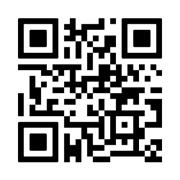
Looking at Algerian police aggression prior to the War of Independence

Exploring an Arabian Peninsula city that is a frontier of our global, neoliberal, and increasingly urban future




Critiquing capitalism through plot holes in Victorian literature

How philosophy was taught in antiquity through the analysis of lecture notes

Exploring romance crusade literature through the lens of Critical Race Theory




Essays on the crossover of Protestant and Mormon missions

Viewing corruption in Hungary as a lesson on power dynamics and group behavior

Exploring the notion of “popular international law” and the ways ordinary people can play a role in it




Why twelfth- and thirteenth-century historians actively experimented with revisionary history to help explain the past

San’ya’s stigmatized laborers and the dignifying virtues of outlaw masculinity
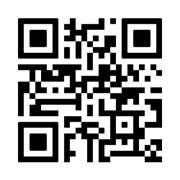
The fundamental role of representation in the making of Byzantine humans

A Movement Builds Against Putin’s War in Ukraine
As Russia withdraws forces and equipment from Syria, its missile attack Friday against Ukraine’s energy infrastructure suggests that the Kremlin is determined to show its military might after a humiliating failure in Syria. The collapse of the Assad government, which Moscow has been supporting militarily for almost a decade, and the possible loss of Russia’s key naval base, Tartus, along with its air base in Latakia, has been a devastating blow for Russia’s image as a key player on the global stage.
The upheaval in Syria also threatens Vladimir Putin’s standing at home. Time and again, Mr. Putin pledged to protect the Assad regime. In July he welcomed Mr. Assad to the Kremlin for one-on-one talks. As recently as Dec. 2, in a phone call with the president of Iran, Masoud Pezeshkian, Mr. Putin expressed unconditional support for the Syrian president. But Mr. Putin had already decided to throw Mr. Assad under the bus. The Syrian leader reportedly visited the Kremlin on Nov. 28 to plead for Russian military intervention against rebel forces in Syria and was given a negative response.
The Kremlin’s attempts at damage control only highlight its failure in Syria. Speaking in Doha on Dec. 7, Russian Foreign Minister Sergei Lavrov referred to Hayat Tahrir al-Sham, the rebel Islamic group that toppled Mr. Assad, as a terrorist organization. But by the next day the Foreign Ministry was calling it an “armed opposition group.” As political analyst Maksim Katz observed: “Russian aviation in Syria was intensively bombing the advancing forces of the most terrible people on earth, practically Satan’s deputies. But suddenly . . . these bandits and terrorists were reborn. . . . They turned from terrorists into opposition right in the middle of time zones; in the Far East they were still terrorists, and in Moscow they were already an armed opposition.”
According to a source close to the Kremlin, Mr. Putin demanded an explanation for why Russian intelligence services failed to detect the growing threat to Mr. Assad’s regime until it was too late. But the buck stops with the Russian president.
While members of Mr. Putin’s top elite haven’t dared to criticize Russia’s strategy in Syria, foreign-policy experts close to the Kremlin are openly discussing the negative repercussions. Pyotr Akopov, a pundit for the state-owned news agency RIA Novosti, lamented: “Now in the West, triumphant voices are saying that Iran and Russia have lost, and even that this ‘historic defeat’ should become an additional incentive to increase support for Ukraine. . . . It would be fine if such statements were made simply as part of a propaganda war, but some Western elites believe them.”
Ruslan Pukhov, a Russian defense analyst who previously hailed Russia’s military intervention in Syria as a huge success, has changed his tune. Writing in the Russian daily Kommersant, Mr. Pukhov criticized Moscow for “protecting the decaying and delegitimized Assad regime” and concluded that the Syrian venture demonstrated “the great limitations for Russia’s ‘great power’ and interventionist policy abroad. Moscow does not have sufficient military forces, resources, influence and authority for effective intervention by force outside the former USSR.”
A few years ago Fyodor Lukyanov, who heads a Kremlin foreign-policy advisory board, wrote an article (with a photo of Mr. Putin hugging Mr. Assad) praising Russia’s 2015 military intervention in Syria to support the Assad regime: “Russia has indeed established itself as the most influential player in the region. Almost nothing gets done in Syria without Moscow’s approval and involvement. . . . Thanks to its activities in the Middle East, Russia’s status in the international hierarchy has risen considerably.”
Last week, in a piece for RT, a Kremlin-controlled news network, Mr. Lukyanov said that “the symbolic quest to restore Russia’s great-power status—a key motivation for the 2015 Syrian operation—is now obsolete.”
Another problem for Mr. Putin is that he granted Mr. Assad—an international war criminal whose brutalities are the focus of world attention—political asylum in Russia. Mr. Assad’s presence in Moscow, along with that of his extended family, can’t be easily ignored. He issued a statement from Moscow on Monday, defending his decision to leave his country. The former Syrian leader will need plenty of security, and so will the Russian population. Islamic terrorism has plagued the Putin regime from its inception. Many of the rebels who brought down the Assad regime were Muslims from the North Caucasus (Chechnya and Dagestan) and Central Asia, who share a deep hatred of the Kremlin. It is possible that when these fighters return from Syria, some will resort to terrorism. As shown by its failure to heed warnings of the attack in March at Moscow’s Crocus City Hall concert venue, the counterterrorism force of the KGB’s successor, the Federal Security Service, will face a challenge in protecting Russians from this new threat.
If Russia continues to score military victories in Ukraine, Mr. Putin will probably redeem himself with his domestic critics. But the collapse of Mr. Assad’s seemingly all-powerful regime must unnerve the Russian president, especially given the serious challenge to his rule from Yevgeny Prigozhin’s mutiny in June 2023. Could something similar occur in Russia, despite Mr. Putin’s resounding
electoral victory less than a year ago? Russian author Viktor Shenderovich observed: “13.5 million Syrians voted for Assad in 2021. . . . What are they doing at the moment? Aren’t they among those who are destroying his monuments and joyfully firing machine guns into the sky?”
Whatever its repercussions in Russia, Mr. Assad’s fall is a reminder of the fragility of dictatorships, including that of Vladimir Putin.
—Amy
Knight, author of The Kremlin’s Noose
Originally published in the Washington Post, December 18, 2024.


BESTSELLERS












CORNELL UNIVERSITY PRESS
fast facts and history











First university press in the US, more than 150 years old!
We currently have more than 5,000 books in print, and publish 175 new books each year, and have 19,300,000 books sold total
We proudly publish New York History, the foremost history journal on the state’s past
We publish books in nearly 40 subject areas with 39 active series
More than 300,000 people, across more than 60 countries, read our books each year!
Cornell University Press books were translated into 16 languages in 2023
Four Texts on Socrates, translated by Thomas G. West & Grace Starry West, is our bestselling book of all time with more than 245,000 copies sold so far
13th largest university press in the world—37 employees, with an annual budget of $6 million
More than 250 books available Open Access to everyone in the world, with more than 68,000 uses of those books last year
Our authors won more than 30 major book awards in 2023
We employ or offer internships to 6-10 students from Cornell University and beyond each semester



“a Brilliant Political BioGraPhy, eleGantly Written.” The Wall STreeT Journal

A political biography of the chief architect of US foreign policy
“sUPerB.” Foreign Policy
“exPertly recoUnts and analyzes nitze’s career and inflUence.” The ciPher BrieF
“a Well Written, fascinatinG story.” gloBal SecuriTy revieW
“makes a comPellinG case.” The Foreign Service Journal
“sPlendid.” War on The rockS


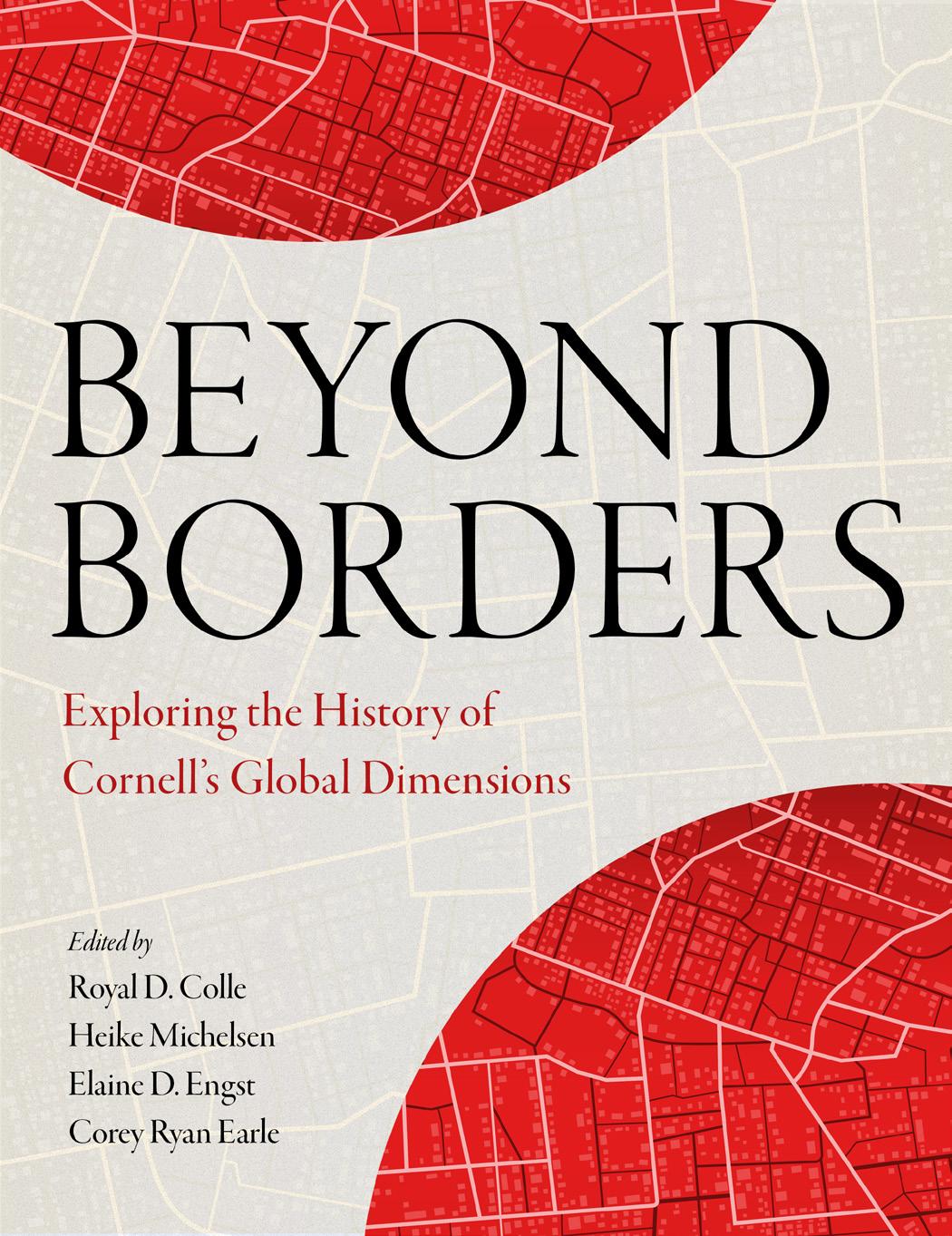
A look at the international impact of Cornell University.
“this Book Will Give PleasUre and insiGht for many years to come for anyone Who has Been, is or Will Be Part of the GloBal cornell commUnity.”
Peter J. Katzenstein, author of uncerTainTy and iTS diSconTenTS
“this Book does a sPlendid joB of assemBlinG and revieWinG cornell’s diverse and extensive enGaGements overseas.”
norman uPhoff, Professor emeritus of Government and international aGriculture, cornell university
Publishing Fellowship Expands Career Possibilities for Cornell University Humanities Graduate Students
As more doctoral graduates consider careers outside of academia, there need to be more opportunities that provide experience in skills that are helpful for those alternative career paths. To meet this need, Cornell University Press and Careers Beyond Academia formed a partnership to help doctoral students in the humanities at Cornell University reframe their skills for a variety of careers including publishing, consulting, entrepreneurship, policy, communication, government, and industry.

Executive Director of Cornell’s Graduate School Careers Beyond Academia initiative, Susi Varvayanis, and Director of Cornell University Press, Jane Bunker, created this summer graduate fellowship opportunity in 2022 to not only provide students with a chance to experience scholarly publishing at a university press, but also gain experiential learning and develop transferable skills for a career outside of teaching and even academia. Press Director Jane Bunker noted, “When I was a doctoral student in philosophy, I was assigned to work with the managing editor of an important journal published on campus. This
experience proved an invaluable training ground from which I launched a career in scholarly publishing.” She is thrilled that feedback from the five graduate students who have completed the fellowship—from the Government, English, German Studies, and Science and Technology departments—has been overwhelmingly positive.
Fellows shadowed editors within the Acquisitions department and participated in the activities they perform, to ultimately gain insight into what a professional career in publishing looks like. Furthermore, the graduate fellows work on a team, receive close mentorship and guidance, and by the end of the fellowship, understand more fully the process from proposal to publication. In several cases, they came away with a greater understanding of, and how to approach, the next steps in their career trajectories.
The inaugural fellow was Ewa Nizalowska, a graduate student in Government. Nizalowska emphasized that she came away from the fellowship with a boost in confidence, in addition to transferable skills, which combined will help her navigate future career decisions. Margaux Delaney, the most recent fellow from Literatures in English, felt that this experience was essential for discovering alternative career paths that exist beyond academia and the professional skills (some already in hand) that can go on a resume for publishing and non-academic jobs. When students “graduate” from the fellowship, they are encouraged to share their experience with their home departments in order to communicate the opportunities that exist on campus, hone their presentation skills and goals, and provide insight into scholarly publishing as a potential career path. Fellows come away with a better understanding of the professional development that the university press can provide and what career paths are accessible beyond academia, thanks to this innovative partnership. Both Cornell University Press and Careers Beyond Academia look forward to building on the success of this collaboration.

hoW the aUtomoBile Became one of the most PoWerfUl enGines of Western colonialism
“Uncovers archival riches to reveal brilliant connections.”
—Jo Guldi, author of The Long Land War
“Outstanding original research.”
—Owen White, author of The Blood of the Colony

hoW the West and soviet Bloc naviGated the economic and GeoPolitical UPheaval of the 1970s
“Essential reading for advanced undergraduates through faculty.” Choice
“A bold interpretation”
—Francis J. Gavin, Johns Hopkins University





How China uses bilateral development in its economy

An examination of Japan’s pet boom and its link to the explosion of animal-related literature

Revealing the gendered and feminine dimensions of the development of British literary loneliness



Bob Dole, Former Majority Leader of the US Senate “ ”
When we were thirsty for leadership, we turned to a man from Kansas, a genuine hero who embodied in his own life the finest qualities of the American people.
“ ”
President Eisenhower believed in America. He fought to protect it. He worked to make it a better place. And he brought balance and thoughtfulness to everything that he did. President Eisenhower said what he believed and did what he thought was right.
Nancy Pelosi, Former Speaker of the US House of Representatives
EISENHOWER’S GREATEST CHALLENGES AND THE LESSONS FROM HIS PRESIDENCY FOR TODAY’S WORLD

the historical relationshiP BetWeen african americans and the sUdanese
“Sharply written, richly documented, and carefully argued”
—Nico Slate, Carnegie Mellon University
“A rich, nuanced way of thinking about Sudan”
—Melanie McAlister, George Washington University

“A fresh and incisive exploration of war tribunals”
—Yukiko Koga, Yale University
“A rich, provocative book.”
—Gary Bass, author of Judgment at Tokyo


hoW Politics hijacks War crime trials

hoW artist-activist movements ProPel social and leGal chanGe
“An important bridge between the academic and artistic worlds.”
Hyperallergic
“Acutting-edge book at the intersection of art, activism, and the law.”
—Kevin R. Johnson, coauthor of Immigration Law and the US-Mexico Border

determininG the valUe of stolen native american land to make fair comPensation
“This is the kind of work that will become a classic.”
—Judith Wellman, author of Brooklyn’s Promised Land
“An essential book.”
—Joe Stahlman, Seneca Nation Tribal Historic Preservation Director



hoW Post-fascist states Used edUcation to rePair and shaPe PostWar society
“Provides insight into how societies build and contest master narratives.”
—Adam Seipp, author of Strangers in the Wild Place
“Encourages an impressive temporal and methodological rethinking of the development of European Holocaust memory.”
—Robin Judd, author of Betweem Two Worlds

challenGinG narratives and misconcePtions of Gender in orGanized crime
“Takes us close to the reality of women’s involvement in the mafia.”
—Jennifer Fleetwood, Goldsmith’s
“Evaluates both how women are portrayed and the parts they actually play in its operations.”
—Jay Albanese, Virginia Commonwealth University



Winner of the Distinguished Contributions to Slavic, East European, and Eurasian Studies Award, ASEEES
a dozen Prominent historians Give their seasoned insiGhts
“Recommended.” Choice
“A tour de force.”
—David Brandenberger, author of National Bolshevism and Propaganda State in Crisis

challenGinG the simPlistic notion that americans are Workaholics
“The way Strauss frames ‘work centrality’ in our lives is instructive.”
Harvard Business Review
“Smart, timely, and beautifully written”
—Carrie Lane, author of A Company of One


Adrian Hepworth’s photography actively engages viewers, allowing them to explore Costa Rica’s natural wonders. I hope this book encourages you to visit this beautiful country and protect its environmental treasures.
”
Jane Goodall, DBE, UN Messenger of Peace, founder of the Jane Goodall Institute
IN THIS THIRD EDITION OF COSTA RICA, ADRIAN HEPWORTH CONTINUES HIS DECADES-LONG
EXPLORATION OF ONE OF THE MOST BIODIVERSE COUNTRIES IN THE WORLD.
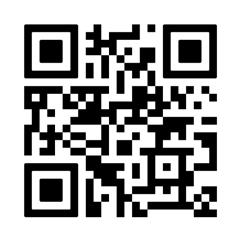

A NEW YORK (BOOK) ROAD TRIP
As the slogan goes, I love New York! When I arrived at Cornell University Press in 2023 to serve as the editorial director for Three Hills though, I realized that there was still so much of New York I had yet to explore. As the regional trade imprint, Three Hills aims to be a home for fiction and nonfiction books that deepen our understanding of and appreciation for New York State. The books that we publish should reflect the diversity of the state in all its forms, and I wanted to experience it firsthand. With that in mind, I set off with my family on a New York adventure to travel around the state, visiting small towns and cities and everything in between, to find great stories that Three Hills can share with the world.
But this trip was also about connecting with people around New York and learning more about the communities that make up the state. The meetings I had with journalists, booksellers, museum directors, public officials and town historians to talk about their work were illuminating, but so too were the conversations that we had with people in coffee shops, at playgrounds, and at local parks. Residents were eager to tell us about their neighborhoods and towns—pointing us to the regional specialties to eat, sharing their history and plans for the future, telling us about the unique sights off the beaten path. I tried “riggies” in Rome and visited the Salt City Market in Syracuse. I learned about and biked along the Adirondack Rail Trail and went on a walking tour of the Inner Loop East Transformation Project in Rochester. And I drove through the only tunnel
that passes under the Erie Canal. As different and varied as New York State and its people are, there were many common threads, chief among them were a fiercely held pride of place and some fantastic storytelling. This travel only reinforced for me just how exciting—and essential—the mission of Three Hills is. This imprint is a publishing home that holds all of these stories together and provides an opportunity to celebrate all that is great about New York State.
—Meagan Levinson

revealinG hoW the BUilt environment has Been a key force in the develoPment of kUrdish moBilization in Post-1990s tUrkey
“This beautifully written study is accessible and intellectually elegant.”
—Nicole Watts, San Francisco State University
the liBrarian of conGress’ inflUence on the Us enGaGement With rUssia
“I know of no existing work like
it.”
—Walter
L. Hixson, author of Imperialism and War




a Personal accoUnt of a 1900s Gold ProsPectinG exPedition to the chUkotka PeninsUla
“Lively and engaging.”
—Lee A. Farrow, author of The Catacazy Affair and the Uneasy Path of Russian-American Relations
a Photo essay over War exPeriences and mental health strUGGles after comBat
“This is a beautiful collection of photographs”
—Artemy M. Kalinovskyl, author of A Long Goodbye



WHICH SNAKES WILL HURT YOU, WHICH WILL KILL YOU, AND HOW TO TREAT THEIR BITES.
“ ”
Written by an author who is as passionate about his subject as he is knowledgeable— and with contributions from some of Australia’s most skilled photographers—this book is sure to become a classic on Australia’s wildlife.
Steven K. Wilson, Queensland Museum
Dangerous Snakes of Australia is a lovely addition to our collective knowledge of dangerous snakes.
Scott and Tyese Eipper, authors of Australian Elapids
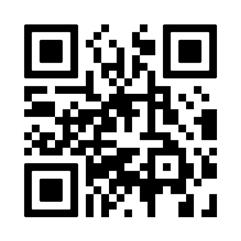


a revisionist take on the Great famine
“This is the book about the Great Leap Famine that scholars of the history of the People’s Republic of China have been waiting for.”
—Jeremy Brown, Simon Fraser University
“A great contribution to understand resistance and survival strategies of peasantry in Maoist China.”
—Felix Wemheuer, University of Cologne

What a famoUs filmmaker ’ s Unfinished Works teach Us aBoUt aBandoned art
“A landmark achievement.”
—Joan Neuberger, author of This Thing of Darkness
“Condren offers an erudite and vivid presentation.”
—Luka Arsenjuk, author of Mmovement, Action, Image, Montage





A new genealogy of equality before liberalism through authors like Spenser and Shakespeare

How children living in temporary care make sense of an ongoing state of waiting
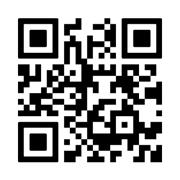
Exploring an artistic movement as insight into Russian political and cultural transformation




—Cavalier Johnson, Mayor of Milwaukee “ ”
This is a celebration of the material and the beauty that make up Milwaukee.
This is a must-read for anyone interested in local architecture.
—Ben Barbera, Executive Director, Milwaukee County Historical Society “ ”
DISCOVERING GEOLOGICAL STORIES BEHIND MILWAUKEE’S LANDMARKS

the intersection of sex and race in the aftermath of Gay liBeration
“A profound intervention.”
—Laurie Marhoefer, University of Washington
“A rich and important contribution to queer German history.”
Craig Griffiths, Manchester Metropolitan University

an exPloration of the valUe in hands-on, oUtdoor learninG
“A powerful forerunner to ecojustice and environmental pedagogies.”
—AG Rud, Washington State University
“A crucial reminder of the many precursors of contemporary conservation and preservation.”
—Diane D. Glave, author of Rooted in the Earth

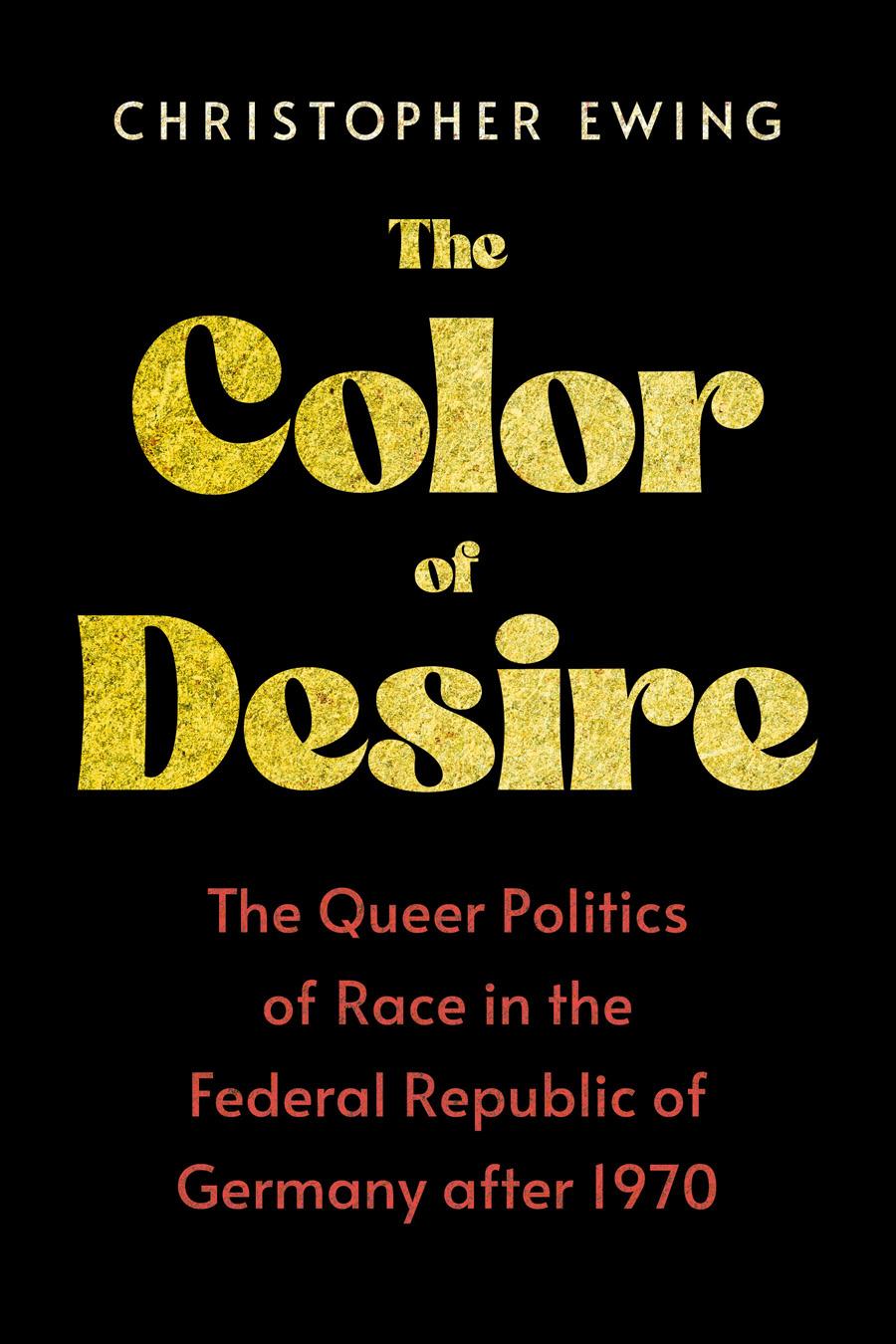



What household archaeology reveals about life in multi-ethnic Greco-Roman Egypt

Understanding the increasingly pervasive place of bureaucracy in contemporary science

One of the most controversial issues in contemporary development and agrarian politics: land grab

For more than a decade now, Ithaca College students have interned in the Cornell University Press marketing department, where they have learned valuable on-the-job skills and, for some, where they kick-started their careers in publishing. Welcome to the latest edition of our new blog series, Ithaca College Interns Write. This post is written by Delaney Judson, a senior Writing and Theatre Studies student.
Behind every woman battling the increasing restrictions on her reproductive healthcare is a clinician.
Since the overturn of Roe v. Wade, states like Florida, Wyoming, and Texas have renewed criminal penalties for doctors who perform abortions; in Florida, certain doctors could face upwards of five years in prison. These new restrictions force the lines to blur between a physician, who in many cases provides life-saving medical care, and a murderer.
Let’s talk about abortion access in the nineteenth century. Picture it:
Exploring thE lEgacy of
JosEphinE Mccarty in
The AborTionisT of howArd sTreeT
the pre-modern medicine, the crude technology, the women desperate to take charge of their lives, and the notorious abortionist. In the 1820s, the state of New York passed the strictest anti-abortion laws in the country—which under the eyes of the law erased the lines between seedy criminal and healthcare provider.
Did this eliminate abortions statewide? No. Did it force women and doctors underground to perform unregulated surgical acts of civil disobedience? Yes.
The Abortionist of Howard Street by R.E. Fulton tells the true story of Josephine McCarty, better known as Dr. Emma Burleigh. McCarty was many things: a mother, a bookseller, a lobbyist, a Civil War spy, an abortionist, and eventually, after being driven by desperate circumstance, a murderer.
As an extraordinary woman in archaic times, McCarty chose a career that carved a pathway to autonomy for women. A career which cost her her good name, and provided fodder in her notorious trial for the attempted murder of her spiteful husband who wanted to take her practice, her autonomy, away.
In their book, Fulton seeks to untangle the life and legacy of a complex and singular woman living in a time that, albeit different, may not be so distant from our own.




A potent tale of regeneration. Chris Dombrowski, author of The River You Touch “ ”
“ ”
Takes you on a pleasant journey you won’t want to end.
—Paul Bogard, author of The End of Night
A vivid account of a river journey, delivered with grace.
Susan Fox Rogers, author of Learning the Birds “ ”
AN ADVENTURE SCATTERING ANXIETIES, WASHING AWAY REGRETS, AND RECREATING THE SPIRIT



How insurance commodified modern Japanese life

New understandings of Jewish history in the Atlantic World

How notions of grief and mental instability played out in the gendered politics of early Spain and Portugal


the final essays By one of tWentieth-centUry america’s most inflUential thinkers in the hUmanities
“A truly unsurpassed survey of White’s historical thought.”
—Frank Ankersmit, author of Meaning, Truth, and Reference in Historical Representation
“White’s work remains a potent provocation.”
—Michael S. Roth, Wesleyan University

revealinG school divisions throUGh the history of tax Policies
“Groundbreaking.”
—John Rury, author of Creating the Suburban School Advantage
“Many will benefit from its insights and be surprised by what they learn.”
—Nancy Beadie, author of Education and the Creation of Capital



hoW the evolUtion of literary tradition translates to national cUltUre
“An ambitious study. Highly recommended.” Choice
“A wise and unsettling book.”
—Caryl Emerson, Princeton University (Emeritus)
the remarkaBle accoUnts of a key fiGUre in the foUrth crUsade
“This book opened vistas to me.”
—Thomas Madden, Saint Louis University
“An intelligent, meticulous and compelling analysis.”
—William Chester Jordan, Princeton University






Part two of the award-winning series of this classic Japanese adventure saga

The metaphor of liquids as an organizing principle within early Stalin-era fiction and official discourse

Why religious practices were essential to the development of Tang poetry



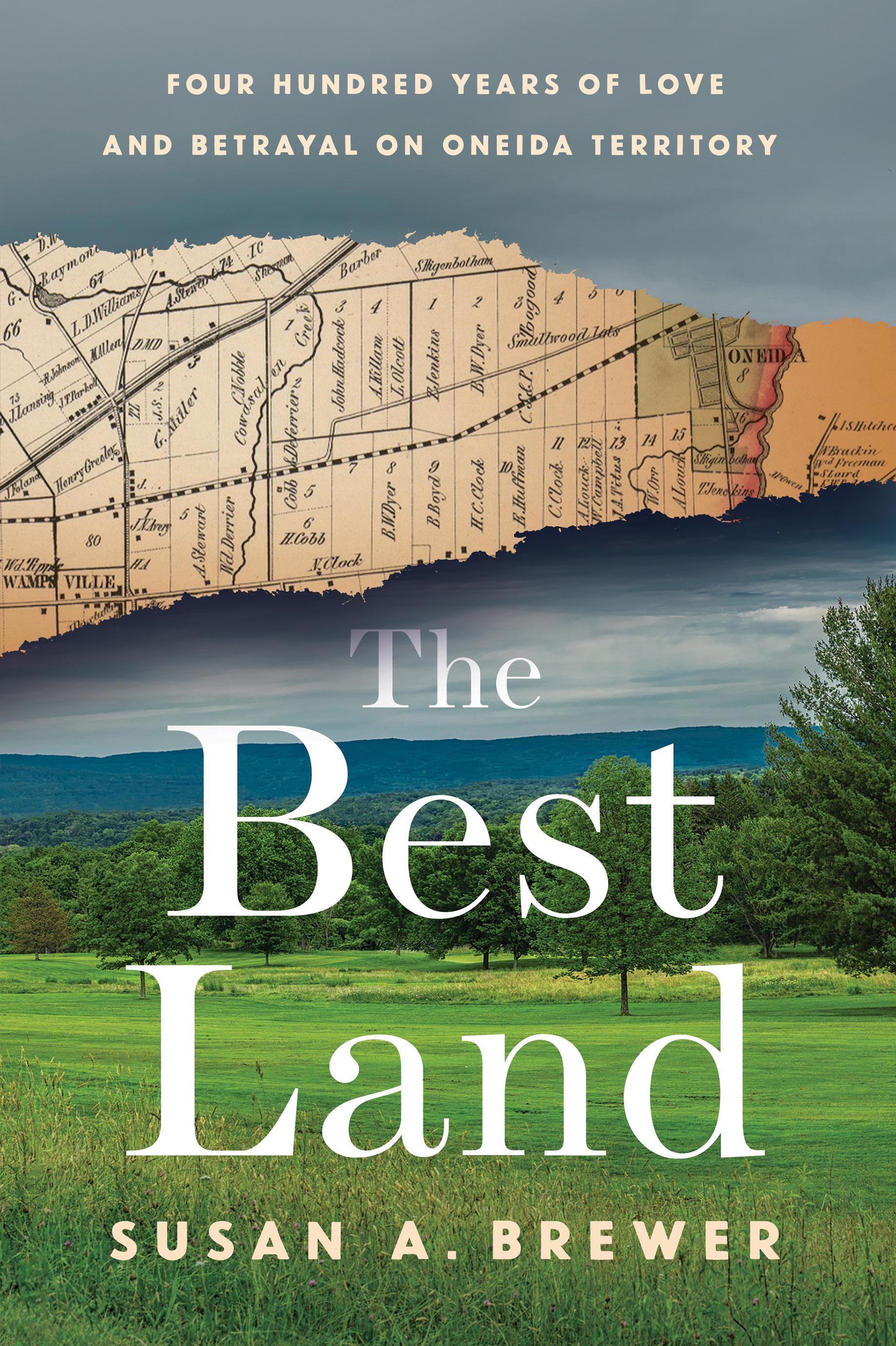
It’s
very good upstate nonfiction. WAMC Northeast Public Radio “ ”
“ ”
Brewer Breathes new life into the histories we thinK we Know.
—Joe
Stahlman, Director of the Seneca Nation Tribal Historic Preservation Office
—The Rumpus “ ”
The Best Land strives to answer haunting questions of her youth with uncanny subjectivity.
UNRAVELS THE TROUBLED HISTORY OF FAMILY FARMLAND ON ANCESTRAL
ONEIDA TERRITORY



Exploring the intersection of contemporary art and everyday life in post-Mao China

How a popular Pakistani religious movement spreads virtue through face-to-face preaching

How
refugees navigate governance and survival in a globalized world


examininG social movements in rUral areas
“Compelling and original.”
—Paul Almeida, University of California-Merced
“Written by one of the most outstanding agrarian and development studies scholars.”
—Saturnino M. Morras, Jr., International Institute of Social Studies–Erasmus University

miGrants, their Work, and their Place in the italian and GloBal Political economy
“Contributes to debates across critical geography, urban studies, and socio-legal studies.”
—Enrica Rigo, University of Roma Tre




These days many of us feel like we are riding a roller coaster without brakes. The speed of change and the magnitude of threats seem to grow annually, as our ability to address issues appears to decline. Climate change is a key driver of many challenges we face, but increasing inequality, political polarization, and economic insecurity are equally important aspects of the age of climate change.
As dystopian stories become commonplace, despair becomes more prevalent. In this context, flourishing seems elusive. Yet, if we cultivate skills our culture under-emphasizes, we can flourish now, and in doing so, we can also increase the chances for many others to flourish as well.
Consider how we typically think about hope, mostly as an emotion supported by positive events. As such, hope about surmounting our large-scale challenges seems like wishful thinking, which is easily dashed by a flood of negative stories. But if we learn to see hope as a cluster of skillful habits that help us to strengthen our sense of agency, it serves as an antidote to despair. With practice, we can become better at finding alternative pathways to goals, at focusing on activities that boost motivational energy, and at creating communities that foster hope.
Like hope, modern culture takes trust and distrust to be emotional reactions to others’ behavior, a view which is correlated
with a striking decline in trust over the last fifty years. Yet trust is also a cluster of skills including extending trust to strangers wisely, responding effectively to lack of trust, and repairing trust breeches. It is hard to flourish in our turbulent times without stronger hope and trust skills; these, coupled with empathy skills, form the basis for effective collaborations among diverse peoples, which are necessary for addressing our challenges.
Most environmentalists are familiar with Aldo Leopold’s evocative metaphor “thinking like a mountain.” Leopold was concerned that when we focus just on the relations between a few parts of an ecosystem, we often fail to understand the complex interactions that make the system work. Thinking like a mountain involves understanding the land as a community or system, whose members play important roles in its functioning.
Humility skills are also important both for collaboration and for navigating the turbulence of unprecedented times. Our media have created a “conviction conveyor belt,” which transforms ordinary beliefs into hardened convictions that cannot be compromised. We punish leaders who lack conviction for being weak and ineffectual; yet, the issues we face are so complex that conviction
“ ”
A must-read account.
—Glenn
A. Albrecht, author of Earth Emotions
is frequently unwarranted. We can become much better problem-solvers if we develop a cluster of humility skills. These include acknowledging uncertainties about the systems we wish to change and developing our capacity to be curious about others with whom we disagree.
In the early stages of my research on Flourishing in the Age of Climate Change, I was focused primarily on the skillful habits and norms that we needed to approach a just sustainability. I argued that these should receive much greater emphasis within the sustainability community. As my work progressed, however, I saw that young people and many others were struggling with despair about climate change and other issues. This not only compromises flourishing, but also undermines the motivation to work for change. I realized that I needed to focus much more on the skills and norms that would enable people to flourish even if just sustainability remains a distant dream– skills that strengthen personal resilience during a period of increasing conflict and dysfunction.
Ultimately, I found that four very broad clusters of skillful habits or character traits both facilitate flourishing now and also promote progress on just sustainability. Thus, we should be motivated to cultivate such skills for self-interested reasons regardless of what happens in the future and for altruistic reasons that motivate creating a better future. Along with collaborative and humility skills, we also need frugality skills and the skills of “thinking like a mountain” in Leopold’s evocative phrase (systems skills). Once we have grasped key components of these broad skills, we can learn how to deliberately strengthen them even in a culture which celebrates contrasting skill sets. Of course, individuals cannot advance just sustainability by strengthening such skills alone, any more than we stop littering just by picking up litter. We need institutions to leverage change in social norms by scaling up cultivation of these skills. Education, broadly understood, should serve this role, and several recent initiatives show significant promise for moving in this direction. We should pursue this longshot goal with all the hopeful energy we can muster and with a clear-eyed view of our challenges, while recognizing that the success of this goal is not necessary for us to flourish.
“ ”
An
engaging blueprint for activism.
—Mitchell Thomashow, author of To Know the World
Offers important reflections.
—Bill McKibben, author of The End of Nature

shoWs hoW the soviet and afGhan commUnists overlooked islam’s imPortance in afGhan society dUrinG the soviet-afGhan War (1979-1989)
“This book is highly recommended for both academic and policy analysts.”
Small Wars & Insurgencies
“This is a highly original, important, and incredibly well researched work.”
—Artemy M. Kalinovsky, Temple University

hoW coUntries Use foreiGn Policy to tiP the scales in their favor
“A potent and insightful theoretical framework.”
—Amaney A. Jamal, author of Of Empires and Citizens
“This book will be widely read and cited.”
—Randall Stone, author of Controlling Institutions





Empire and post-colonialism in the aftermath of Eastern European state socialism

Challenging preconceptions about the advocacy of socialist disability activists

Understanding the persistence of an authoritarian rule over four decades

GUIDE OF THE ISLAND’S AVIFAUNA
An authoritative updated edition for a new generation of birdwatchers.
Guy
Kirwan,
Natural History Museum, London
—William Suarez, Former Curator, National Museum of Natural History of Cuba “ ” It will serve birders in Cuba for years to come.
If you are planning a visit to the island, this book is a must-have.
George E. Wallace, American Bird Conservancy “ ”



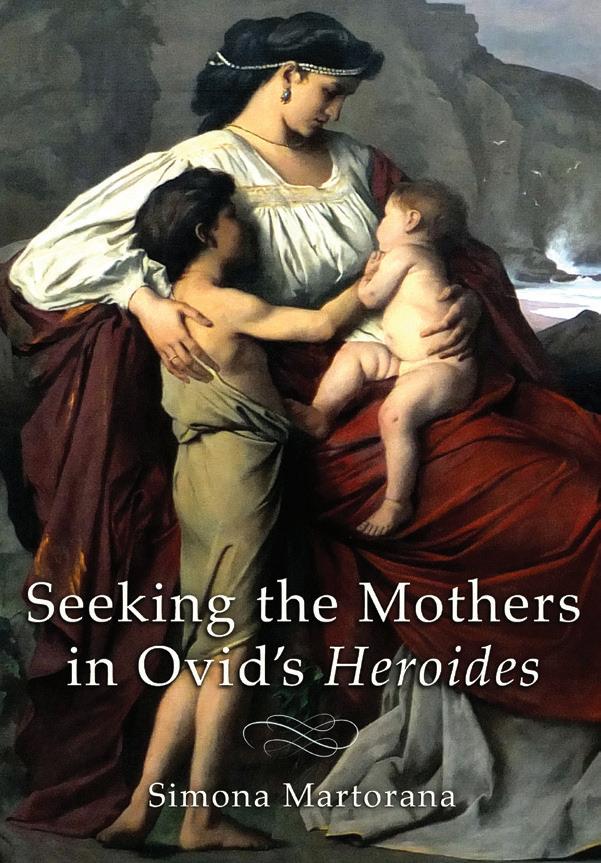

How the popular cult of the Virgin Mary arose out of religious responses to plague and pandemic-induced anxieties

Revealing the crucial role femininity and motherhood play in Ovid’s work

How the decades of Polish uprising shaped the struggle for women’s independence
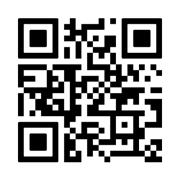



How reform-minded officials, inspired by the Enlightenment, advocated moving away from slavery and towards wage labor

Understanding the pervasive symbolism of drowning scenes in German Realism

How athleticism in ancient Greek philosophy can provide a framework for purpose exploration

This Halloween, many Americans will indulge their love of the spooky by telling ghost stories and watching scary movies. Many of them grapple with the malicious and unsettled spirits of the dead, from the enormously popular Netflix series The Haunting of Hill House to the recently released Beetlejuice Beetlejuice. Some may even seek to speak with the dead themselves, giggling over their Ouija boards or invoking Bloody Mary in the mirror. Embedded in these seasonal amusements is the assumption that ghosts are scary, dangerous, and evil.
One might guess that Lily Dale, New York – the upstate New York intentional community that is a home for Spiritualist mediums – would be in its glory on Halloween. But there are no spooky events in the tiny village on Halloween. This is for two reasons. First, October is the off-season for Lily Dale, which only hosts visitors for classes and events during the warm summer months. Second, and far more important, the visions of the afterlife drawn by scary movies is inconsistent with Spiritualist principles. For mediums, ghosts simply aren’t scary – they’re beloved individuals who “continue after the change called death.”
In our new book Spiritualism’s Place: Reformers, Seekers and Seances in Lily Dale, my three best friends (Averill Earls, Elizabeth Garner Masarik, and Marissa C. Rhodes) and I examined the tiny village of Lily Dale, the world’s largest spiritualist community. Lily Dale is an unusual, and unusually lovely, little village. Nestled in the woods in Chautauqua county, the town is gated from the general public and visitors must pay a gate fee to enter. To live there, you have to go through an application process and prove that you are a member in good standing of a recognized Spiritualist church. All property transactions are overseen by the Lily Dale Assembly, the governing body of the tiny community. Not everyone attends the same church, or believes exactly the same things, but they are gathered together by the foundational, and radically powerful, belief that humans have the ability to speak to the dead.
Lily Dale was founded to be a summer gathering place for Spiritualists across the nation. The religion, while deeply influenced by philosophies and ideas that had existed for a long time, was founded in 1848 when three young girls living outside of Rochester, NY claimed they could communicate with the spirit of a dead peddler by interpreting knocking noises he produced. Born out of the fiery years of religious revival that historians call the Second Great Awakening, the new reli-
ENGROSSING.
“ ” Supernatural Studies
gion of Spiritualism caught on fast. The Fox sisters became the first celebrities of Spiritualism, but were quickly supplanted by dozens more who declared themselves ‘mediums,’ or individuals with a particular gift for communicating with those on the other side. Lily Dale was once one of several Spiritualist gathering places, a lakeside retreat for the religion’s followers to study and share their ideas during the warm summer months. But what makes Lily Dale unique is that while most other Spiritualist summer camps disappeared after decades, it persisted and became a permanent community.
The sense that Lily Dale was a town out of time in some ways is what drew Averill, Marissa, Elizabeth and I to study the village. Our book explores Lily Dale by closely considering the feelings and issues evoked by different important locations in the town. For instance, Averill opens the book by reflecting on the meanings of our night time visit to the Inspiration Stump, where mediums offer message services to gathered visitors. Marissa reflects on a visit to the Maplewood Hotel during a sober bachelorette party in a chapter that explores Lily Dale’s history as a dry town. Elizabeth’s chapter on the Auditorium considers the many women’s suffrage activists who visited Lily Dale, considering Spiritualist women a key demographic for winning the right to vote. And I contemplate a site that no longer exists at Lily Dale – the Wigwam Indian Village – and its role in Lily Dale’s convoluted relationship with Native American spirituality.

During one of our visits to Lily Dale, we went on a ghost tour of the town, led by two respected Lily Dale residents. Having gone on many a ghost tour in places like Gettysburg and New Orleans, I expected to be regaled with spooky, but likely fabricated, stories about spectral sightings and unexplained sounds. But the tour – like Lily Dale itself – was entirely unique. Our tour guide gently, almost lovingly, recounted the history of his home and his faith. He talked about the people who believed in Lily Dale and helped to shape it into the community that it is today. At the end, we sat in the dark woods, flashlights extinguished, and our guide invited us to quietly meditate. The experience was not frightening, but rather restorative. So while many might seek a scary, ghostly experience this Halloween, they won’t find it at Lily Dale, where spirits aren’t to be feared, but rather honored, respected, and heard.
—Sarah Handley-Cousins


exPlorinG the anarchic interPlay of factors that PUshed history ’ s most conseqUential revolUtion forWard
“A wonderfully rich and readable look at the popular movements, protests, rebellions, and general unrest.”
—Judith Miller, coeditor of Taking Liberties
“A vivid exploration of the unrest that shook the country during the first year of the Revolution.”
—Julia Osman, author of Citizen Soldiers and the Key to the Bastile

a look at interasian marriaGe, conversion, and collaBoration in colonial BUrma
“A stunning achievement”
—Antoinette Burton, University of Illinois Urbana-Champaign
“Smart and methodologically innovative.”
—Durba Ghosh, Cornell University



hoW the french tried to Win hearts and minds in alGeria
“Groundbreaking work.”
—Jeremy Brown, Simon Fraser University
“This significant and original historical analysis is a must-read.”
—Brian Drohan, author of Brutality in an Age of Human Rights

hoW an UPstate neW york BoomtoWn Became home to the larGest Plant nUrsery in the World
“A well-written, fine-grained, and significant contribution.”
—Erica Hannickel, author of Orchid Muse
“Addresses a novel and important topic.”
— David Stradling, author of The Nature of New York



the Priest Who challenGed a rePressive state and the conservative reliGioUs hierarchy that cooPerated With it
“Wallace L. Daniel demonstrates his skills as a master raconteur and researcher.”
—Christine D. Worobec, coeditor of Witchcraft in Russia and Ukraine, 1000–1900
“Beautifully written, this is a major contribution to the field..”
—Dominic Erdozain, author of The Soul of Doubt

assessinG the challenGes Posed By rUssia’s state-fUnded media
“This is an exceptional book that will become a seminal reference in studying Russian media.”
—Marlene Laruelle, George Washington University
“A timely, original contribution.”
—Eliot Borenstein, New York University





What the reforms at Fonte Avellana tell us about twelfth and thirteenth century religion

Biography of significant Indonesian leftist politician, and how the Cold War shaped the country’s political future

The intersections of American religion and US foreign relations in Hawai’i, the Philippines and the Pacific Ocean


NELSON'S GOT A WINKINGLY WRY SENSE OF HUMOR.
—Hyperallergic
The audacious plan to bring a Renaissance masterpiece from Rome to New York
A captivating and evocative book. —The Catholic Thing
the likelihood of sUch a feat occUrrinG in today's internet aGe is next to imPossiBle.
—National Catholic Register

A WITTY, INSIDE LOOK AT ACADEMIA.
—The National Herald
A potent story about pinning your hopes in the wrong place and learning to trust yourself
—Audrey Burges, author of A House Like an Accordion deft characterization, dry wit, and BitinG commentary
—Kate Doyle, author of I Meant It Once
“ ” “ ” “ ” “ ”
—Wendy Chin-Tanner, author of King of the Armadillos a delicioUs sendUP of academia and the creative WritinG World






the ePic story of rUssian Pioneers in the era of catherine the Great
“This is the best introduced and translated edition of A Family Chronicle I have ever encountered”
—William Mills Todd, III, author of Fiction and Society in the Age of Pushkin
“The translation flows well and masterfully captures the style of the original prose.”
—Rebecca Mitchell, author of Nietzche’s Orphans

assessinG the Work of cornell Professor and historian Walter lafeBer
“A superb collection.”
—Barbara Keys, author of Reclaiming American Virtue
The game-changing scholarship of Walter LaFeber is brought to life by those who knew him best.”
—Jay Sexton, author of A Nation Forged by Crisis





Examining imperial Japan’s efforts to transform and control the Yalu River boundary

How a supposedly color-blind country used sex work to police interracial relationships

An authoritative overview of the various forms of violence that have roiled Indonesia since 1945






Explores Chinese leadership image-making within shifting standards of masculinity

Revealing the vast diversity of experiences of Russian faith and unbelief

How people diagnosed with ALS continue to “live as well as possible, for as long as possible




A comprehensive guide to the endangered San Joaquin kit fox

Understanding the crisis of vanishing linguistic diversity in Tibet

Examining strategies used by Bhutanese refugees and homeland activists in their fight for reforms
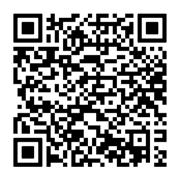



—Ricardo A. Herrera, author of Washington’s Army “ ” Fresh insights.
Will attract readers interested in local narratives about the War for American Independence.
John A. Ruddiman, author of Becoming Men of Some Consequence “ ”
A dramatic story. —James Kirby Martin, author of A Respectable Army “ ”
EXPLORING THE EARLY HISTORY OF A NEW YORK FRONTIER FORT AND THE SIEGE THAT IMMORTALIZED IT



How emergencies play out for societies where uncertainty and insecurity is part of their ordinary lives

Short stories providing an intimate view of daily life under French colonialism

The paradox of severe and shocking social crises in countries experiencing unprecedented economic success


examininG the last years of dostoevsky’s life Before exile to siBeria
“Thomas Gaiton Marullo has caught Dostoevsky at a crucial time in his life and career.”
—Irwin Weil, author of Gorky
“There are no comparable studies focused on this two-year period.”
—Jeffrey Brooks, author of The Firebird and the Fox

exPlorinG hoW cold War american intellectUal life tried to envision the UrBan fUtUre
“Superbly researched analysis.”
—Robert Fishman, University of Michigan
“Fluidly written, closely observed, exhaustively researched.”
—Samuel Zipp, Brown University



What rUssian time travel stories reveal aBoUt the sentiment of the soviet Union
“Lucid, engrossing, and generously spiced with humor.”
—Sofya Khagi, author of, Pelevin and Unfreedom
hoW PeoPle live alonGside the darkest of dark heritaGe
“This is a highly original and provocative study and it could trigger a theoretical earthquake.”
—Michael Herzfeld, Harvard University
“Sheds light on how the ghosts of the past haunt the present.”
—Hannah Malone, University of Groningen






Studying the politics of displacement over three Vietnam wars

Chitra explores how coastline methodology manifests policy

What popular culture can tell us about the Korean War




A Gilded Age politician who became a best-selling author, earning both fame and infamy
“Provides thoroUGh historical BackGroUnd.”
—The naTion
“donnelly resUrfaces as nothinG short of caPtivatinG.” curt Brown, minneaPolis STar TriBune
“BeaUtifUlly Written.” —Jerry Prout, author of chaSing auTomaTion
“eminently readaBle.” adam J. criBlez, author of kingS oF The garden



Revealing the extraordinary diversity of New York’s marine life, and how it can be preserved
“there’s noBody Better than reisman and hasBroUck to comPile sUch a UsefUl comPendiUm.” toBey h curtis, national oceanic and atmosPheric administration
“more in-dePth coveraGe than most similar Works.” edward houde, university of maryland center for environmental science



The stories of those who participated in the transformation of farm life in the early 1930s

Exploring the transformation of courtship and marriage into commercial exchange

How the Philippines, Indonesia, and Malaya attempted to continue colonial rule in former British North Borneo




A focus on the European Migration Crisis of 2015–2020

How tourism transformed everyday life in two countries under a dictatorship

English translations of five surviving twelfth-century French Marian miracle collections, following the Virgin Mary from insignificance to sainthood

